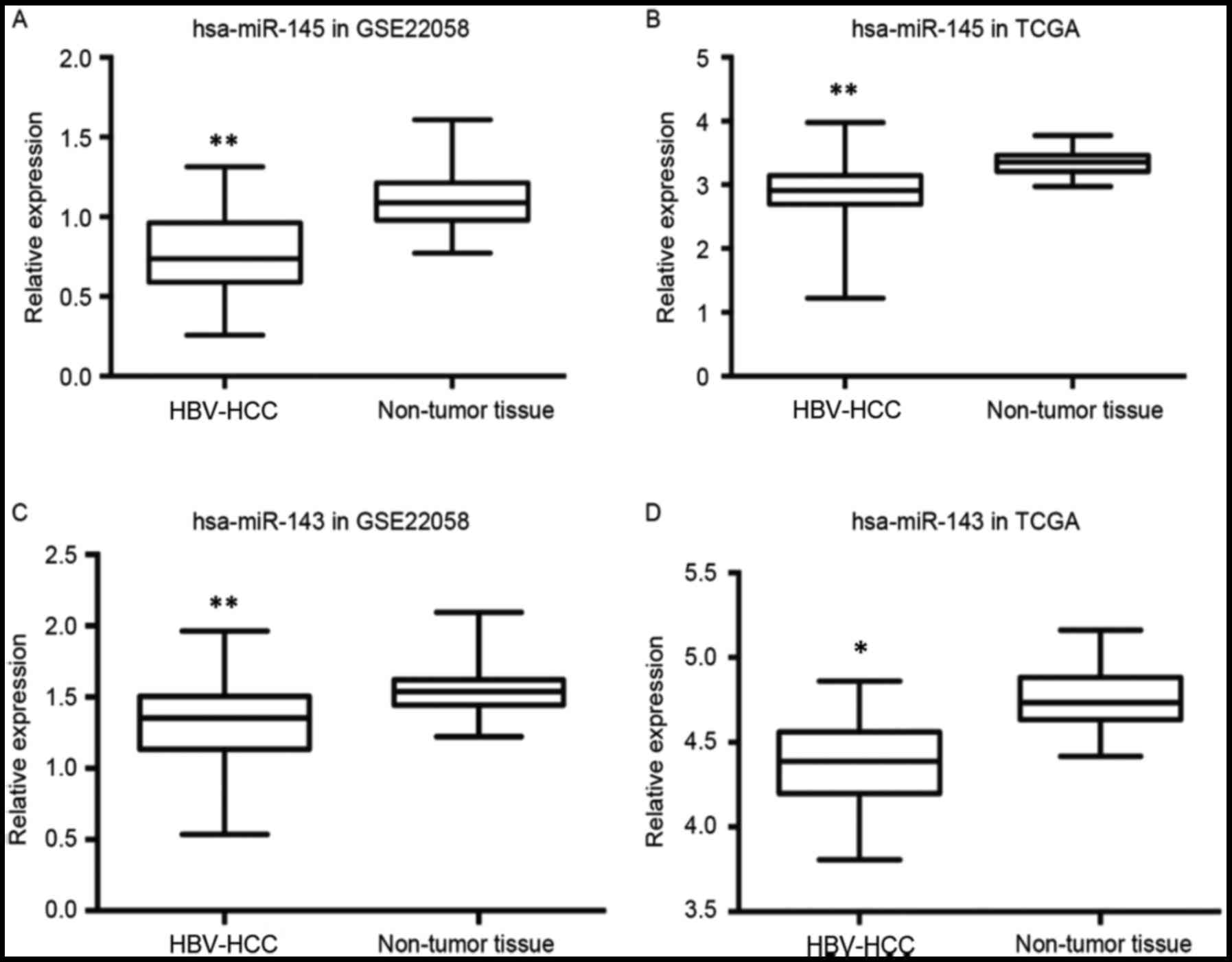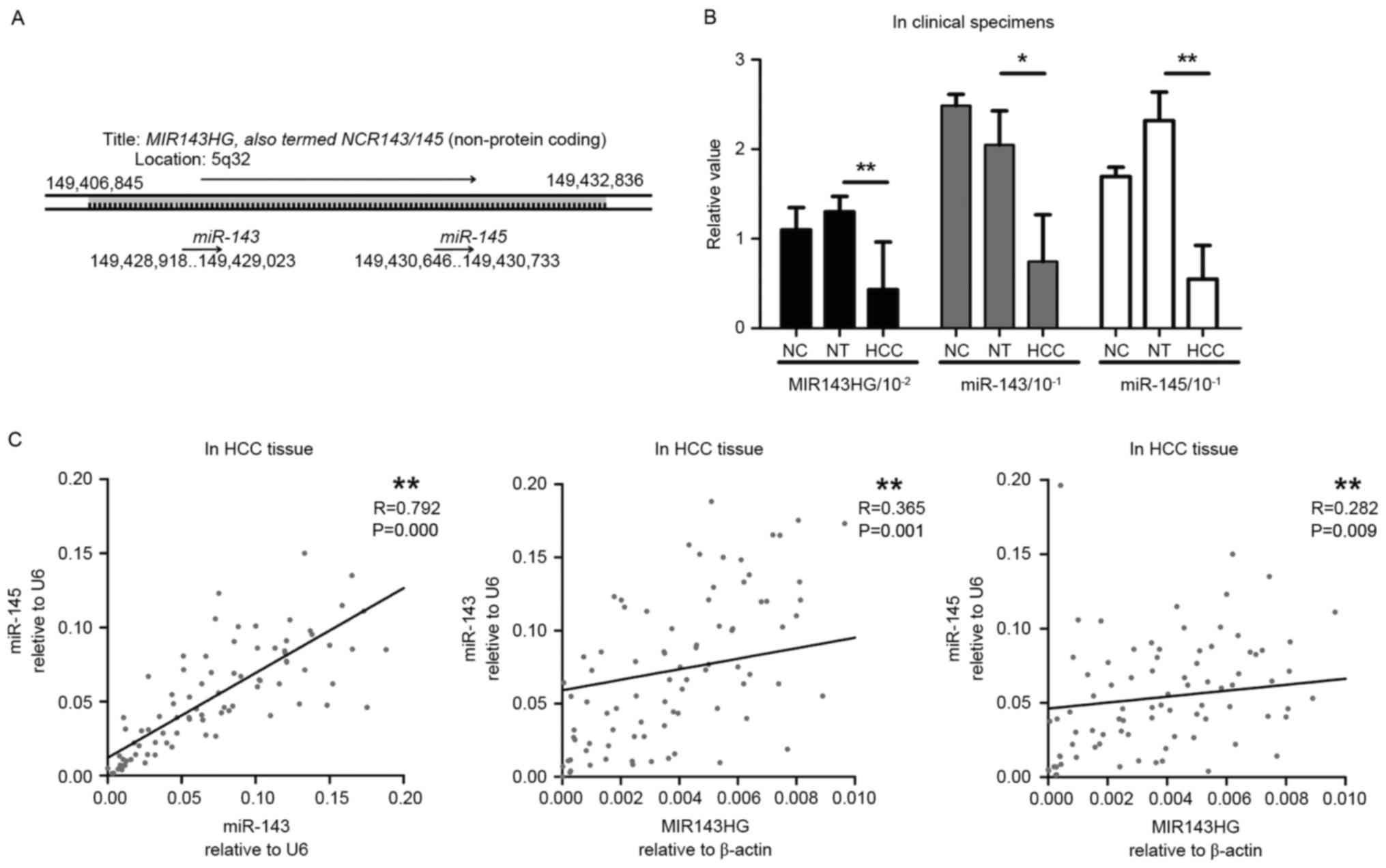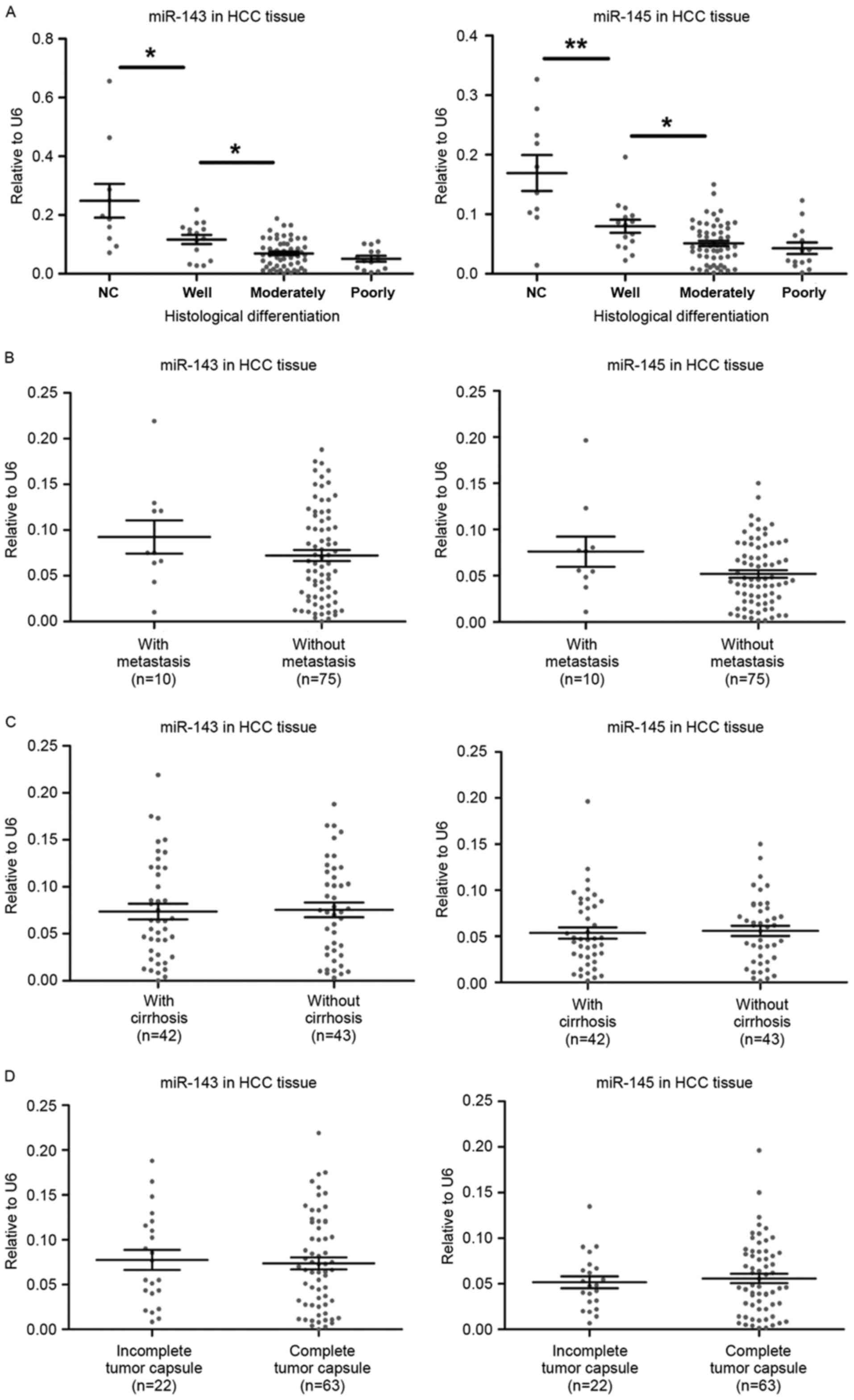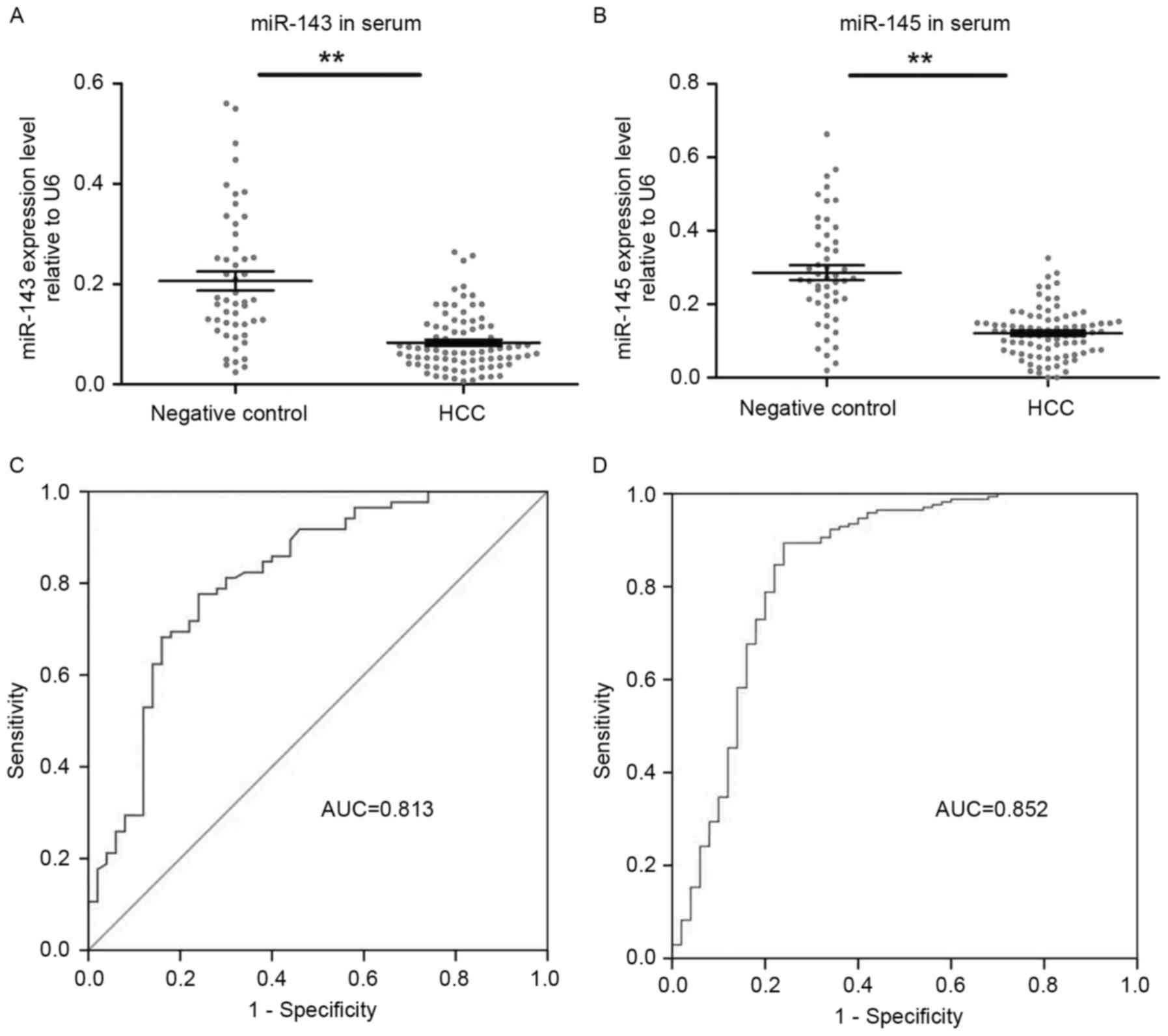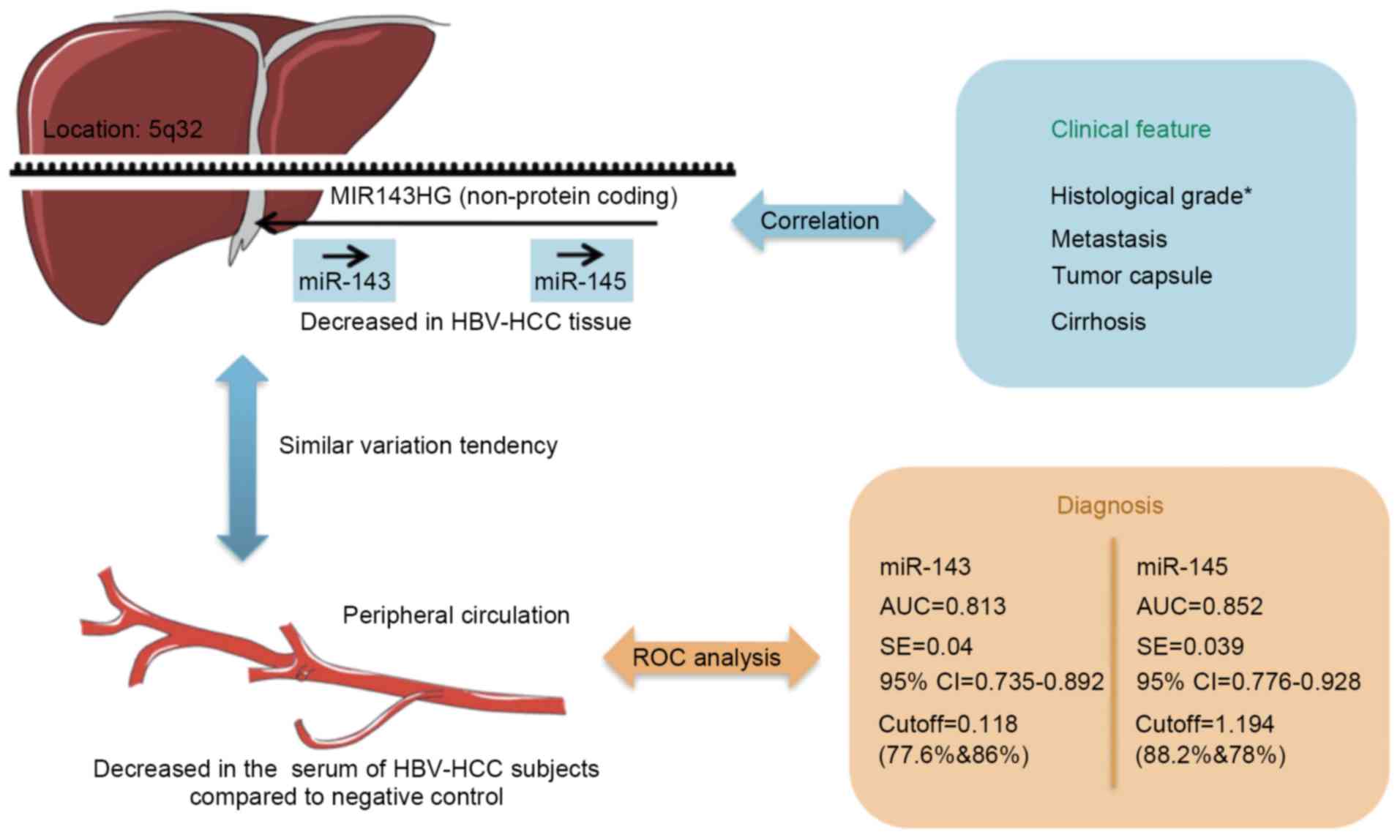Expression of the microRNA-143/145 cluster is decreased in hepatitis B virus-associated hepatocellular carcinoma and may serve as a biomarker for tumorigenesis in patients with chronic hepatitis B
- Authors:
- Published online on: February 26, 2018 https://doi.org/10.3892/ol.2018.8117
- Pages: 6115-6122
-
Copyright: © Zhao et al. This is an open access article distributed under the terms of Creative Commons Attribution License.
Metrics:
Total
Views: 0 (Spandidos Publications: | PMC Statistics:
)
Total PDF Downloads: 0 (Spandidos Publications: | PMC Statistics:
)
Abstract
The aims of the present study were to identify the expression profile of microRNA (miR)-143/145 in hepatitis B virus (HBV)-associated hepatocellular carcinoma (HCC), explore its association with prognosis and investigate whether the serum miR-143/145 expression levels may serve as a diagnostic indicator of HBV‑associated HCC. The microRNA (miRNA) chromatin immunoprecipitation dataset was obtained from The Cancer Genome Atlas (TCGA) and the Gene Expression Omnibus databases, and analyzed using the Wilcoxon signed‑rank test. It was observed that the expression of miR‑143 and miR‑145 was decreased 1.5‑fold in HBV‑associated HCC samples compared with non‑tumor tissue in the TCGA and the GSE22058 datasets (P<0.01). Using the reverse transcription‑quantitative polymerase chain reaction, it was further confirmed that miR‑143/145 and their host gene MIR143HG were downregulated in HBV‑associated HCC tissues compared with corresponding distal non‑tumor tissues. The lower level of miR‑143 and miR‑145 expression was associated with tumor differentiation, and may thus be responsible for a poor prognosis of patients with HBV‑associated HCC. The receiver-operating characteristic (ROC) curves were used to explore the potential value of miR‑143 and miR‑145 as biomarkers for predicting HBV‑associated HCC tumorigenesis. In serum, miR‑143/145 were identified to be significantly decreased in patients with HBV‑associated HCC compared with negative control patients, and their associated areas under the ROC curves were calculated at 0.813 and 0.852 (P<0.05), with each having a sensitivity and a specificity close to 0.80. These results indicated that the decreased expression of the miR‑143/145 cluster and their host gene MIR143HG in HBV-associated HCC tissue was associated with prognosis, and each of these miRNAs may serve as a valuable diagnostic biomarker for predicting HBV‑associated HCC tumorigenesis.



